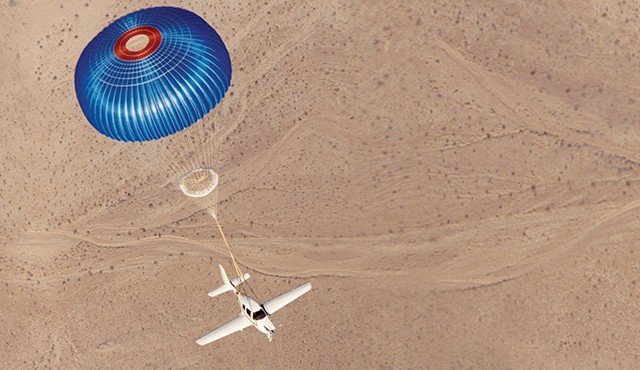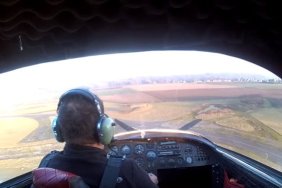The whole-plane parachute that safely landed a former Walmart CEO from a stalled engine in the skies recently is widely credited with saving at least 257 lives. So why aren’t more planes equipped with them?
The parachute that comes factory installed in the Cirrus SR22T that Bill Simon was flying this week in the skies of Arkansas is manufactured by Ballistics Recovery Systems. Its founder, Boris Popov, founded the company in 1980 after barely surviving a hang-gliding accident.
Simon last weekend managed to land his plane safely on an Arkansas highway with one of the company’s whole-plane chutes. Although the aircraft clipped a passenger truck on the way down, everyone involved only sustained minor injuries.
The BRS whole-plane parachute has been installed on Cirrus aircraft since 1998, adapted into what the company calls the Cirrus Airframe Parachute System. It credits the devices for saving at least 112 lives.
“From the start of our company, each and every day, the profound passion for everyone at Cirrus is to create safer airplanes, safer pilots and safer skies,” read a statement on the company’s website.
A whole-plane BRS is also equipped on two Cessna model airplanes beginning in 2002. A total of 30,000 BRS chutes have been installed on aircraft saving a documented 257 lives, according to a 2011 article in Air & Space magazine.
That tally does not include the pilot off the coast of Hawaii in January who drifted his stalled Cirrus SR22 into the Pacific Ocean only to be picked up soon after by a nearby Holland America cruise ship.
The idea for whole-plane parachutes has been around for a long time, first adopted by Hollywood stunt pilots in 1929 when Roscoe Turner used a whole-plane chute as a performance.
In 1948, pilot Bob Fronius deployed a chute on a JR-V Robin sailplane near San Diego. He would climb to altitude, shut down the engine and pull the chord. Then as a stunt he would release the chute, sending the plane diving toward the ground as the engine would start.
“The idea of the Cirrus aircraft and the Klapmeier brothers who designed it was there should be another option — that the penalty for bad judgment, for bad luck shouldn’t be death,” James Fallows, national correspondent for The Atlantic, also a pilot who flies a Cirrus, told CBS News.
In 2013, the BBC explored the issue of using such whole-plane chutes on commercial jet liners. The conclusion was that in order to drift an airbus to the ground, it would require about 21 parachutes each about a football field in size.
Seeing as that would probably not be conceivable, another option would be to drop the wings and fuselage mid-air disaster to lose weight and deploy a reasonably sized chute. But even this is not exactly a realistic idea.
Photo credit: Cirrus Aircraft








